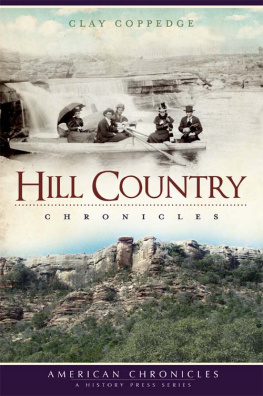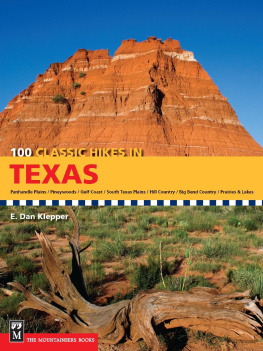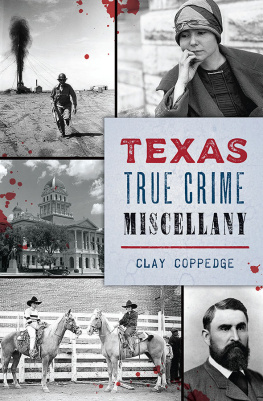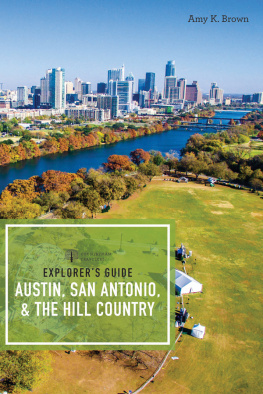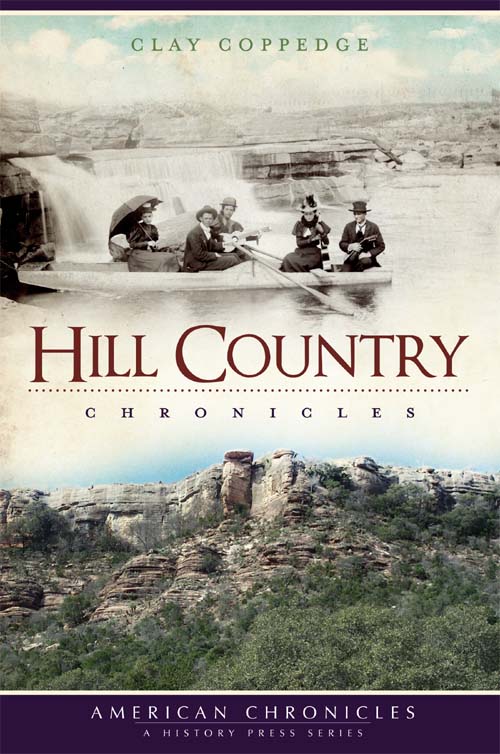HILL COUNTRY
CHRONICLES
HILL COUNTRY
CHRONICLES
CLAY COPPEDGE

Published by The History Press
Charleston, SC 29403
www.historypress.net
Copyright 2010 by Clay Coppedge
All rights reserved
Cover image: Blanco County Courthouse. Courtesy of the Texas State Library.
First published 2010
Second printing 2011
Third printing 2011
e-book edition 2011
ISBN 978.1.61423.218.6
Coppedge, Clay.
Hill Country chronicles / Clay Coppedge.
p. cm.
Includes bibliographical references.
print edition ISBN 978-1-59629-980-1
1. Texas Hill Country (Tex.)--History. 2. Texas Hill Country (Tex.)--History, Local. 3.
Texas Hill Country (Tex.)--Biography. 4. Texas Hill Country (Tex.)--Social life and customs.
I. Title.
F392.T47C67 2010
976.431--dc22
2010024441
Notice: The information in this book is true and complete to the best of our knowledge. It is offered without guarantee on the part of the author or The History Press. The author and The History Press disclaim all liability in connection with the use of this book.
All rights reserved. No part of this book may be reproduced or transmitted in any form whatsoever without prior written permission from the publisher except in the case of brief quotations embodied in critical articles and reviews.
Dedicated to the memories of A.C. Greene, Jim Bowmer
and Bob and Nancy Coppedge.
CONTENTS
Jim Bowie and his Knife
PREFACE
Most of these stories first appeared, sometimes in different form, in the Country World newspaper, a division of Echo Publishing, Inc. In Praise of the Unappreciated Mule, Camels for Texas, Cowboy King of Polo, Plight of the Pleurocoeleus, Thanksgiving as a Texas Thang, Charcoal Burners and Cedar Choppers and The Reindeer of Texas first appeared in Texas Co-op Power magazine.
Part I
A FORBIDDING LAND
EASTER FIRES
In the wake of the French Revolution of the 1830s, German princes ruled their provinces with what can charitably be called an iron hand, forcing thousands of students, professors, craftsmen and farmers out of the country. Some of those dispossessed Germans looked toward Texas as a true land of the free, a place to start over. Glowing descriptions of the state in travel books and brochures were, unfortunately for the immigrants, more poetic than accurate.
The group that probably suffered the most from the Texas propaganda was the Mainzer Adelsverein, a group of noblemen led by Baron Otfriend Hans Freiherr von Meusebach. He Americanized his name to John Meusebach on the boat from Germany. The Comanches would know him as El Sol Colorado because of his flowing red beard.
Once in Texas, the Adelsverein suffered a shortage of wagons to transport them from the coast, where people were having considerable difficulties with Mexico. They were also short on money but carried a surplus of debt and disease as they made their way to the three million acres of the Fisher-Miller land grant, of which the Comanches knew nothing.
Meusebach bought ten thousand acres of wilderness land near the Pedernales River on credit and, with about 120 of his fellow immigrants, built an outpost called Fredericksburg in honor of Prince Frederick of Prussia, who helped finance the Adelsverein. Survivors of the trek and the settlement's early days began the work of moving from tents into actual structures, planting crops and forming militias to protect against Indian attacks. A year later, more than five hundred German immigrants were living in the new outpost.
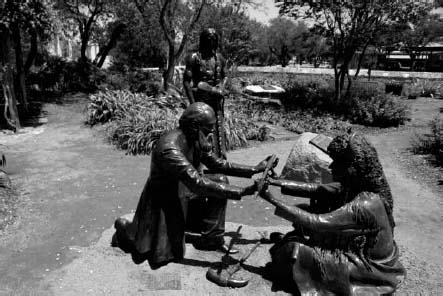
John O. Meusebach negotiated a treaty that kept Fredericksburg relatively free of the Comanche raids that plagued the rest of the Hill Country.
Meusebach knew he had to deal with the Comanches if the Adelsverein was to settle any of the expansive land grant. Conventional wisdom held that meeting with the Comanches, peacefully or not, was a form of suicide. The tribe's depredations in the Hill Country were many and gruesome. The community of Baby Head supposedly got its name because the Comanches left a baby's head, impaled on a spike or fence post, as a message to other would-be settlers.
Somehow, Meusebach, speaking through Indian interpreter Jim Shaw, was able to reach an accord with the Comanche. He negotiated with Comanche chiefs Buffalo Hump, Santa Anna, Old Owl and others at the San Saba River, not far from Mason, in March 1847. Meusebach offered the Comanches some $3,000 worth of presents in exchange for not harming the surveyors or settlers he aimed to turn loose in the territory. Surveyors were special targets of the Indians, who believed that the surveying equipment was what allowed the white settlers to steal their land, which was true, but in a way that the Comanches would have seen as hopelessly abstract.
The treaty stated in part: In regard to the settlements on the Llano the Comanches promise not to disturb or in any way molest the German colonists, on the contrary to assist them, also to give notice if they see bad Indians about the settlement who come to steal horses from or in any way molest the Germansthe Germans likewise promising to aid the Comanches against their enemies, should they be in danger of having their horses stolen or in any way to be injured. And both parties agree, that if there be any difficulties or any wrong done by single bad men, to bring the same before the chiefs to be finally settled and decided by the agent of our great father. The deal was sealed in Fredericksburg on May 9, 1847, when the Comanche chiefs came to town to accept their gifts.
The treaty was a turning point for the settlement and one of the most noteworthy contributions of many that German immigrants made to Texas, but the days leading up to the final negotiations on the San Saba were tense. Comanches lurked every which way in the hills as Meusebach and the Germans made their way north. It was an unsettled time and people were on edge.
Supposedly, the Comanches lit signal fires along the hilltops to let the chiefs know where the Germans were and how many men were traveling to the San Saba. Other accounts describe the fires as simply campfires. Either way, the fires lit up the night and terrified some small children in an unprotected Fredericksburg cabin. The children asked their mother why the fires were burning. Were the Comanches coming? Were they going to die? The mother reassured the children by telling them that the fires would heat great cauldrons in which Easter eggs would be boiled and that the eggs would be painted with dye from wildflowers that other rabbits had gathered in anticipation of the Easter rabbit's arrival. The children went to sleep feeling safe and protected. Peace soon descended upon the land.
That's the story of the Easter Fires, a foundation of the legend and lore of Fredericksburg's founding. For a while, it was told that the tradition of the Easter Fires actually started in Fredericksburg, but the tradition of Easter Fires can actually be traced all the way back to pre-Christian times as a pagan ritual of spring, one that was incorporated by Teutonic Christianity.
Germans had been lighting Easter Fires on the Saturday evening preceding Easter for centuries before anybody in Europe had ever heard of the New World or Texas. Meusebach met with the Comanches on March 1 and 2, but Easter fell on April 3 that year, which brings us back to that house in which the mother tried to soothe her children's fears. Since Easter Fires weren't lit in every German province, the mother might have been from an area that didn't observe the ritual, or maybe she told them that it was going to take a month to get the eggs ready. Who knows?

